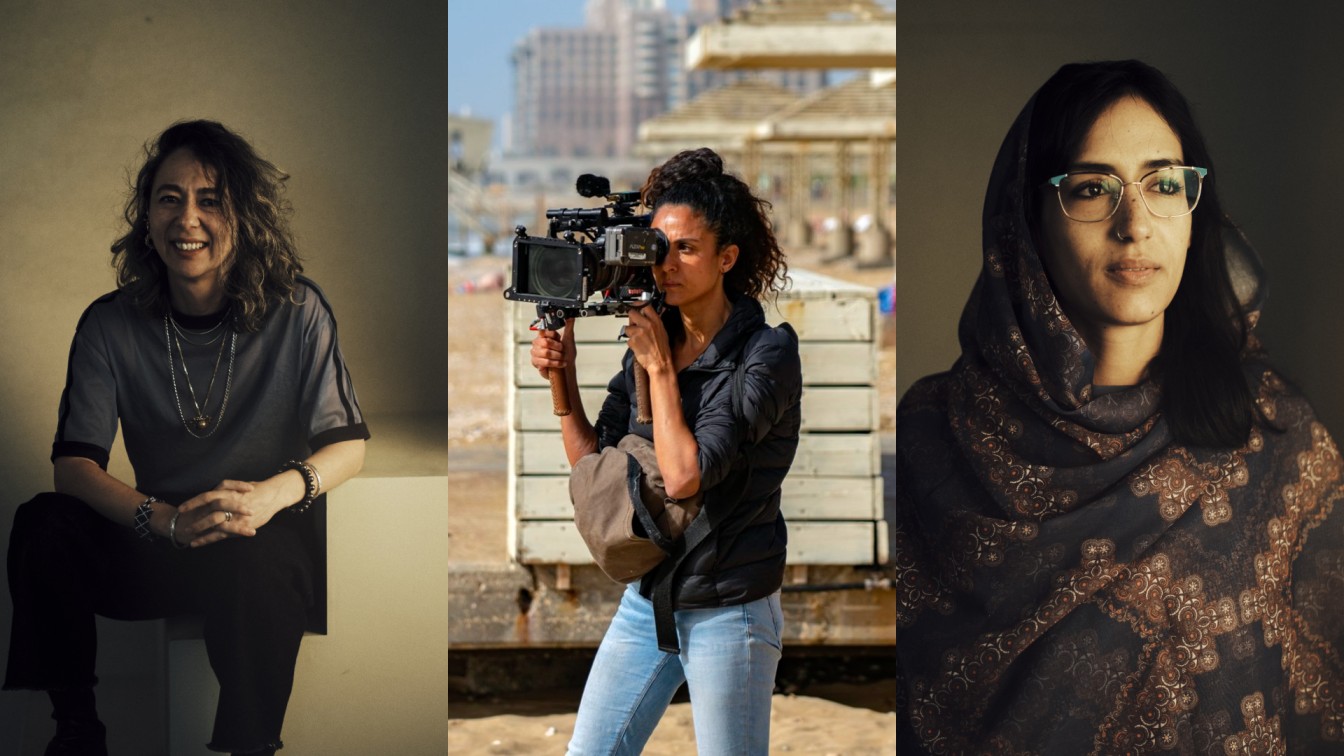“My aim with the film was to transport people to Western Sahara, to its people… I believe the film’s authenticity comes from the Sahrawi actors who are playing characters they believe in because so much of themselves and their lives are expressed through them” – Eimi Imanishi.
By Jerry Chiemeke
Set against the unresolved territorial dispute between Morocco and the Polisario Front that has rendered Western Sahara a political purgatory, Eimi Imanishi’s feature debut, Nomad Shadow, is a body of work that investigates the unforgiving dynamics of exile: how identity calcifies in foreign soil and then cracks when forced back into its original mold.
The film opens with jarring juxtaposition: Mariam (Nadhira Mohamed)’s euphoric nightclub revelry in Spain cut against her sudden deportation to Western Sahara. This tonal whiplash establishes Imanishi’s central thesis: exile transcends physical displacement, and it’s also a psychological fragmentation that leaves the displaced perpetually caught between incompatible realities.
From a directorial standpoint, Nomad Shadow establishes Eimi Imanishi as a filmmaker of considerable promise, one capable of finding intimate human stories within larger political realities. Her refusal to provide simple answers to complex questions of home, belonging, and identity marks her as a mature voice unwilling to sacrifice complexity for emotional satisfaction.
Imanishi demonstrates considerable ambition in her attempt to weave individual trauma into the larger framework of Sahrawi resistance. Nomad Shadow presents revolution as operating across multiple dimensions: the collective struggle against Moroccan occupation, Mariam’s rebellion against patriarchal expectations of marriage and submission, and Sidahmed (Omar Salem)’s quiet resistance as a queer man whose very existence challenges conservative social hierarchies.
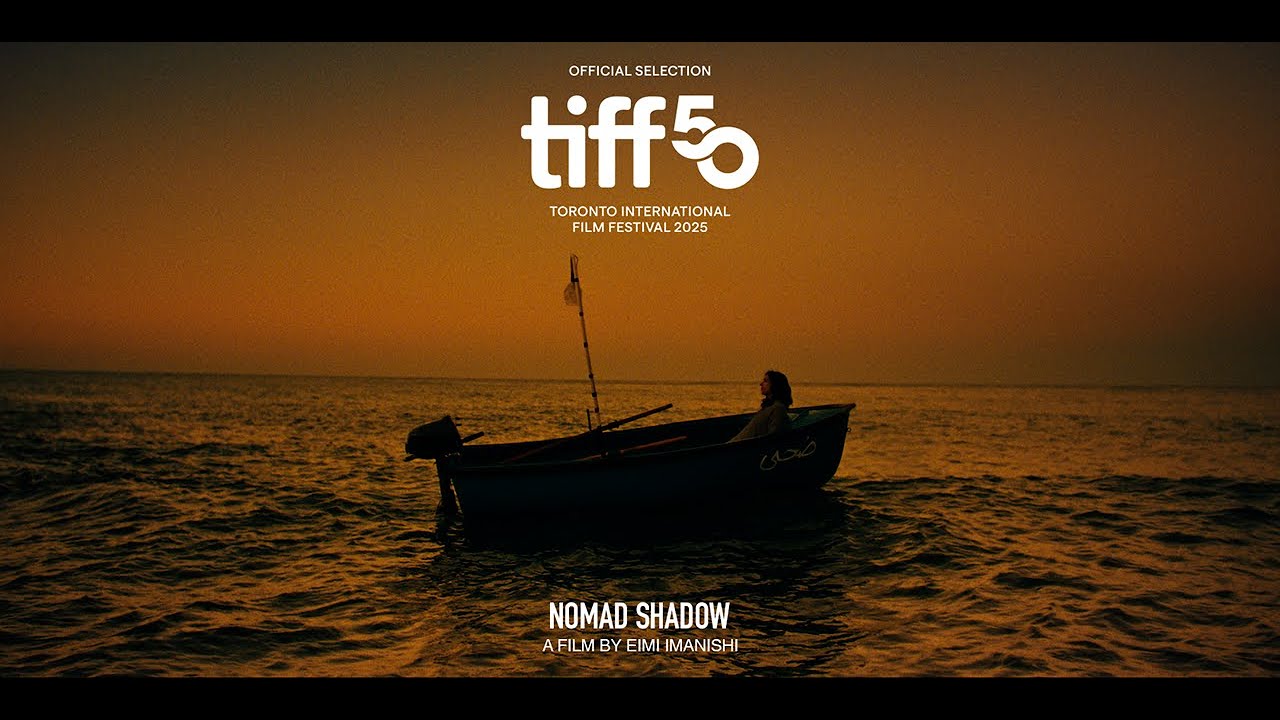
Mohamed delivers a performance that avoids the easy sympathies of victimhood. Her Mariam is complicated: selfish, damaged, often difficult, yet undeniably human in her contradictions. The actress navigates the character’s emotional extremes with remarkable restraint, allowing the audience to witness her internal fragmentation without theatrical excess.
Frida Marzouk’s cinematography is actively involved in this project of emotional archaeology, using extreme close-ups of Mohamed’s cheekbones, neck, and wrists to map the geography of trauma onto the female body. The recurring dream sequences—Mariam struggling to catch fish from a sailboat, unable to find her bearings—achieve a visual poetry that speaks to the existential drift of the permanently displaced.
In this conversation, Afrocritik sits with Eimi Imanishi, Nadhira Mohamed, and cinematographer, Frida Marzouk, to discuss the making of Nomad Shadow, tapping into lived experiences, balancing camera with dialogue, and the nuances of character exploration.
Eimi, let’s begin with you. Given the collapsed UN ceasefire and ongoing Moroccan military occupation, what ethical considerations did you wrestle with when choosing to set your debut feature in Western Sahara? How do you balance artistic vision with political responsibility?
Eimi Imanishi: My aim isn’t to influence politics but to affect people and connect with them emotionally. Nomad Shadow is a story about a woman’s struggle to find a sense of belonging and emancipation in a world that rejects or constricts her both physically and existentially.
The political aspect is just one of many threads that weave through the story. And my ethics are simple – in portraying the Sahrawi people, my moral compass is grounded in what I directly lived, saw, or heard during my time living in Western Sahara, having married a man from there.
The protagonist Mariam’s family is a blatant combination of his family and my own, to those who know both well, and the scope of Mariam’s emotional arc in the film is relatable to many people outside of the Sahrawi culture or political discourse.
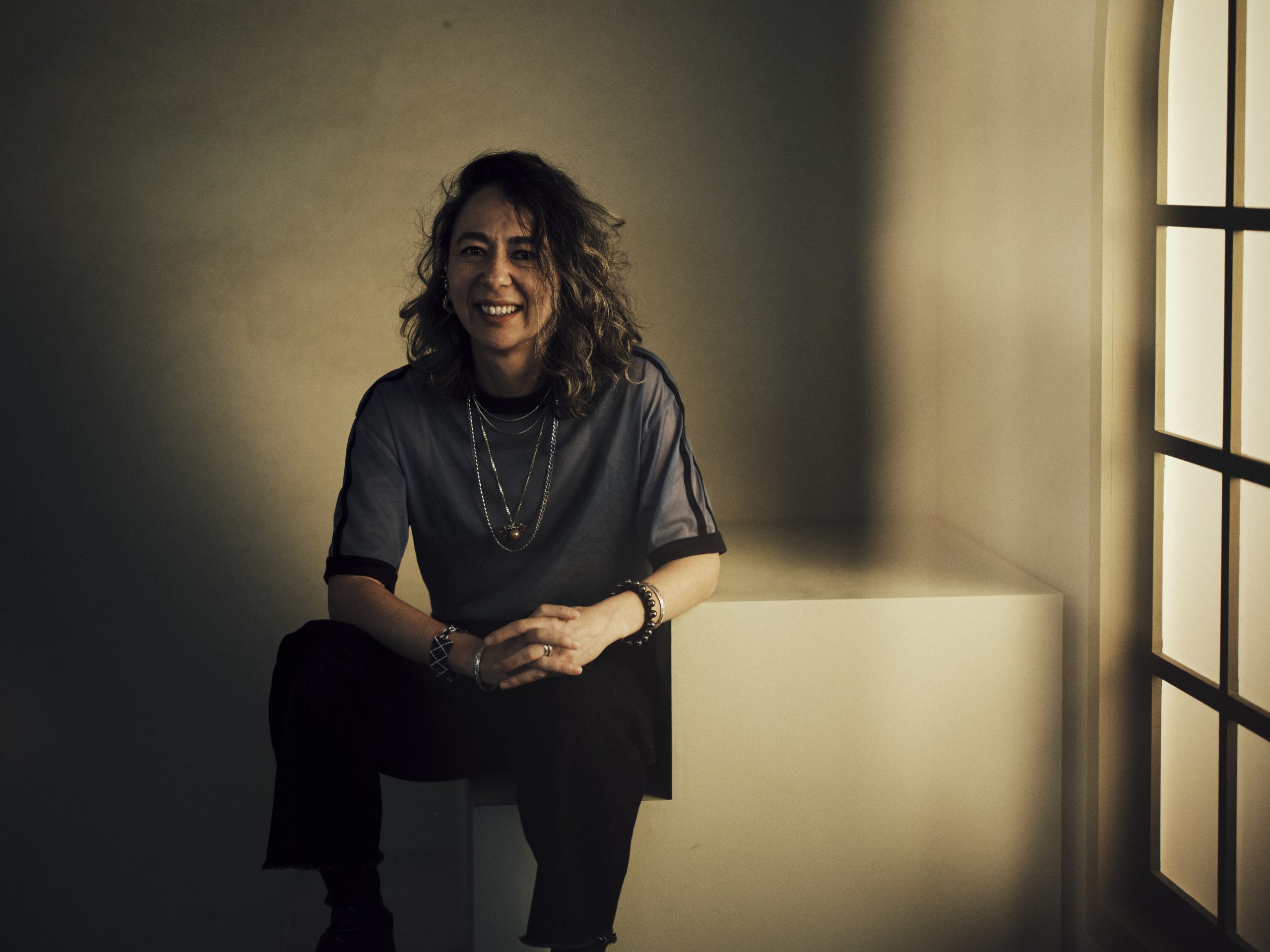
Was it a deliberate choice to focus on internal displacement rather than external politics?
Eimi Imanishi: Yes, the story of displacement or migration is one that I connect with on a personal level, and the feeling surrounding those themes is what I wanted to transmit the most through the film. Western Sahara is the specific context in which that story takes place, but the politics are only one aspect of representing this place and its culture.
Nadhira, this one is directed at you. How did you navigate playing a character caught between cultural authenticity and personal agency without falling into stereotypes?
Nadhira Mohamed: A large part of Mariam’s personality is completely shared with mine. The strength and decisiveness of Mariam’s character are exactly like mine. That’s why the question of identity has always been within me—my identity is not fixed; it has been shaped by the experiences I’ve had both in Spain and in the Sahara. Many people see this as a dilemma, but for me, it’s a richness that comes from being a migrant.
What was your internal process for accessing the specific emotional states portrayed in the film?
Nadhira Mohamed: Remembering my own past experiences, combined with Eimi Imanishi’s great direction as a director.
Eimi, your story presents revolution on multiple levels: political, personal, and sexual. How do you direct actors to embody these intersecting forms of resistance without the performances becoming overly didactic?
Eimi Imanishi: Most of the actors in this film are living the political situation on a daily basis. On top of that, the women within that society have another oppressive gender barrier to overcome. My actors were quick to understand these themes as they live them in some form every day.
My role as a director was mostly in getting to know each person personally and working together to find common experiences between the characters in the script and themselves to focus their performances.
Nadhira, your character experiences multiple forms of rejection – from family, friends, and homeland itself. How do you sustain that level of emotional vulnerability throughout the film without becoming one-dimensional in your expressions of despair?
Nadira Mohamed: It’s clear that playing the character of Mariam wasn’t easy because of all the emotion she carries throughout the film, but working under Eimi’s direction made managing all those emotions not very difficult — though it was definitely intense.
What was your collaboration process with Eimi (Imanishi) and Frida (Marzouk) to make the dream sequences on the sailboat feel urgent rather than indulgent?
Nadhira Mohamed: Working with two women like Eimi and Frida has been both a challenge and an honour, because their experience in film is completely different from mine. It’s their guidance and way of directing that made everything feel easy.
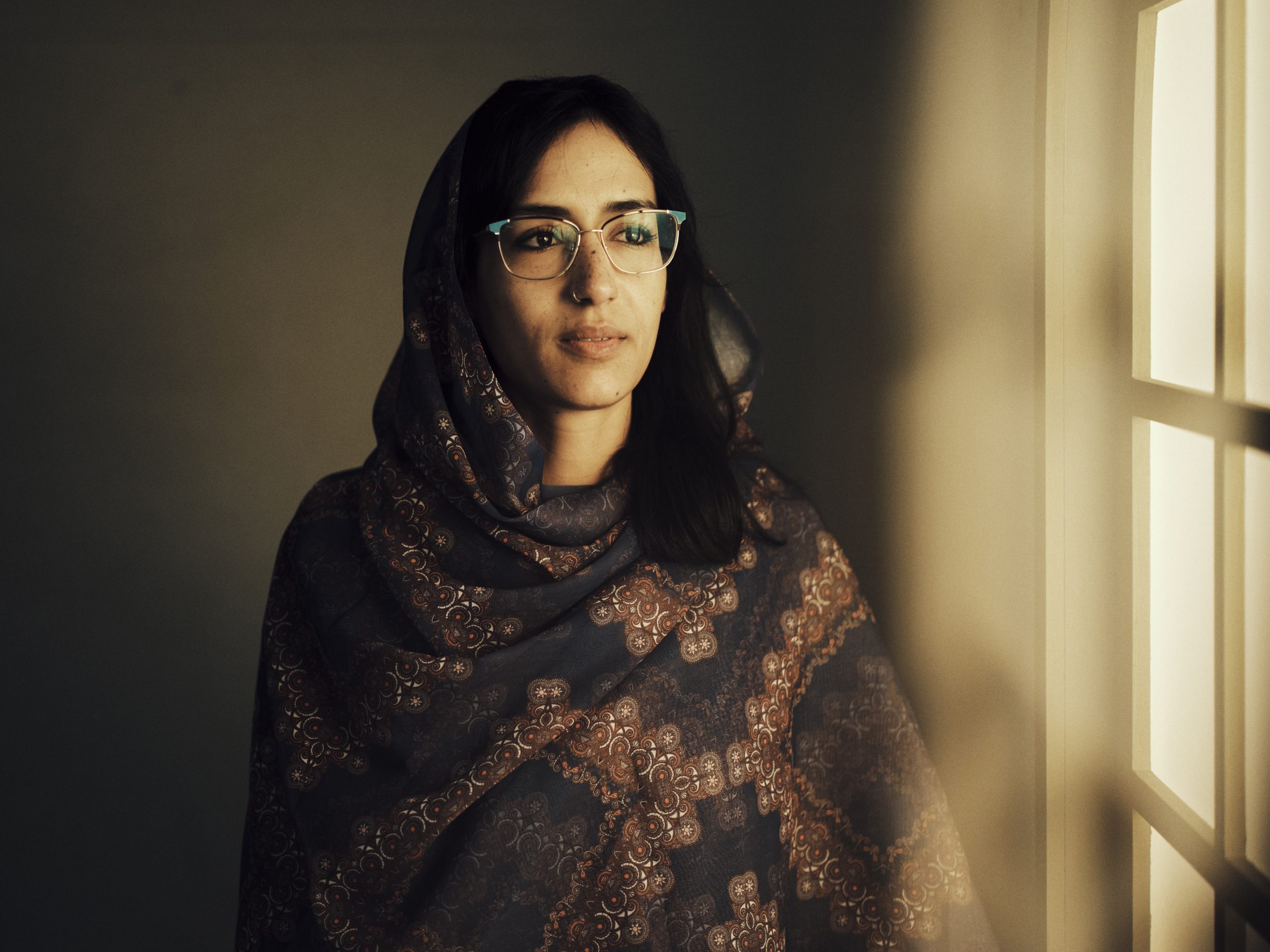
Over to you, Frida. The sailboat dream sequences bear a sense of urgency. What specific camera techniques, lighting choices, or movement decisions create that urgency versus the more grounded reality of Western Sahara?
Frida Marzouk: The sailboat sequence is the dream sequence. The camera was still handheld and operated by a different cameraman. My main contribution to that scene was the colour treatment.
It was originally shot early in the morning, with natural blue light and some shots were also done at night. But with my colourist, Vincent (Amor), we transformed the blue into a golden tone. The idea behind that was to invert space and to play with time. A sunset at night. The white light of the moon becomes golden over a Black Sea. And in the original blue sequences, the sky becomes the sea, and the golden desert becomes the sky. I felt that kind of inversion created an alternate world, where things are emotional rather than rational. It’s a space where the unconscious takes over.
How do you decide which shots serve to translate the story better, for example, which close-ups reveal that dialogue cannot?
Frida Marzouk: When we started talking with Eimi (Imanishi), the main idea was to keep the focus on Mariam, our main character, to really follow her emotional journey as she returns home. Nadhira (Mohamed) is such an expressive actor. She doesn’t need dialogue for the audience to understand what she’s feeling.
I’m always drawn to faces and gestures. Dialogue helps, but some of the most powerful moments in the film are internal and without dialogue and you can feel them just by watching her. The camera is there almost like a shadow, staying close to her and letting her emotions come through. The sound design enhances that internal world.
A good example is the funeral scene: we hear the Quran being recited, but we follow Mariam through the house of the deceased, and the camera stays with her the whole time. The focus is on Mariam, while the rest is blurry. It becomes purely subjective, like we’re feeling the world from her perspective. I think it’s one of the most powerful moments in the film and it works without a single word.
Given the length of the film, how do you balance intimate character moments with establishing the broader political landscape? What visual cues help audiences understand the occupation without explicit exposition?
Frida Marzouk: Eimi (Imanishi) wanted to focus on a personal story, something universal rather than political. Since the film is fiction and not a documentary, the political context remains in the background. The story is about someone coming home after a long absence and the difficulties that it can bring up. It’s about how that person feels, the emotional weight of returning. And that experience could happen anywhere.
But the occupation is still represented in a very subtle way, primarily through the distant or fragmented presence of the police. Visually, they’re often seen from afar or partially obscured, which creates a sense of threat but without making them the visual or narrative focus.
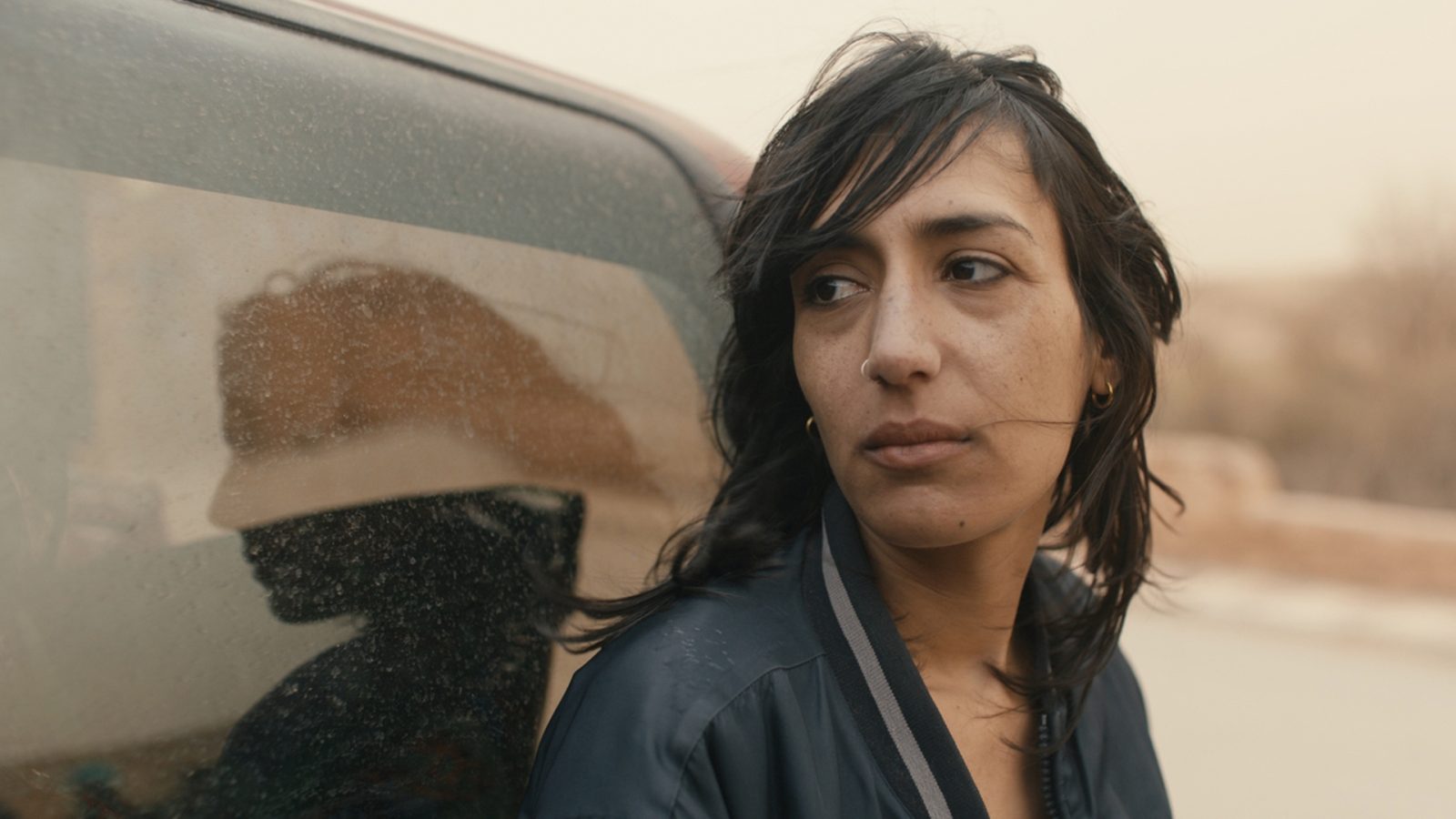
As a cinematographer, how do you support an actor’s internal work through your external choices of framing, lighting, and movement?
Frida Marzouk: The approach we discussed was to stay close to Mohamed, to physically become her shadow. I moved with her intuitively, syncing with her rhythm, her steps. That kind of instinctive, character-driven camerawork is one of the things I love most about operating.
We shot the film mostly without traditional coverage and relied on plan sequences. That choice allowed us to stay immersed in Mariam’s perspective without breaking the emotional flow. We also used the space, the walls, especially in the family home, to create a sense of divide between her and the rest of the family. Using close-ups was a way to express how stuck Mariam feels, not just physically, but emotionally. She’s back in a place that no longer feels like home, and by keeping her isolated in the frame, even while in motion, we tried to capture that disconnection.
Eimi, your previous shorts like Battalion to My Beat (2016) premiered at major festivals. How did scaling up to an 81-minute feature change your approach to intimate character work versus broader political themes?
Eimi Imanishi: I didn’t really change my approach toward the work as a whole, except that with the feature the writing phase was much more laboured because I wanted my characters to be more complex, multi-faceted and vocal, so I needed to write a lot more dialogue than with Battalion.
I wanted to portray daily life in Western Sahara through the protagonist’s family and friends in order to bring more intimacy to the story, and to allow the audience to experience the film through the character’s lens rather than through a geopolitical one.
Frida, this film depicts both the vast landscape of Western Sahara and extreme closeups of emotional states. How do you work with a first-time feature director to establish a visual language that serves both scales?
Frida Marzouk: My first step when prepping with a new director, especially if it’s their first film, is to listen as much as possible. It’s important to understand where they’re coming from and what the intentions are for the script and each scene. Eimi had strong references that helped me tune into her vision. From there, I could bring in my own sensibility and see how best to enhance what she wanted to achieve.
The vast landscapes of the Sahara are deeply emotional, especially when combined with the beautiful sound design that created a strong sense of space and, at the same time, a feeling of emptiness or void. I think the contrast between those wide open spaces and the closeups creates a paradox within the film and for our characters’ inner struggles.
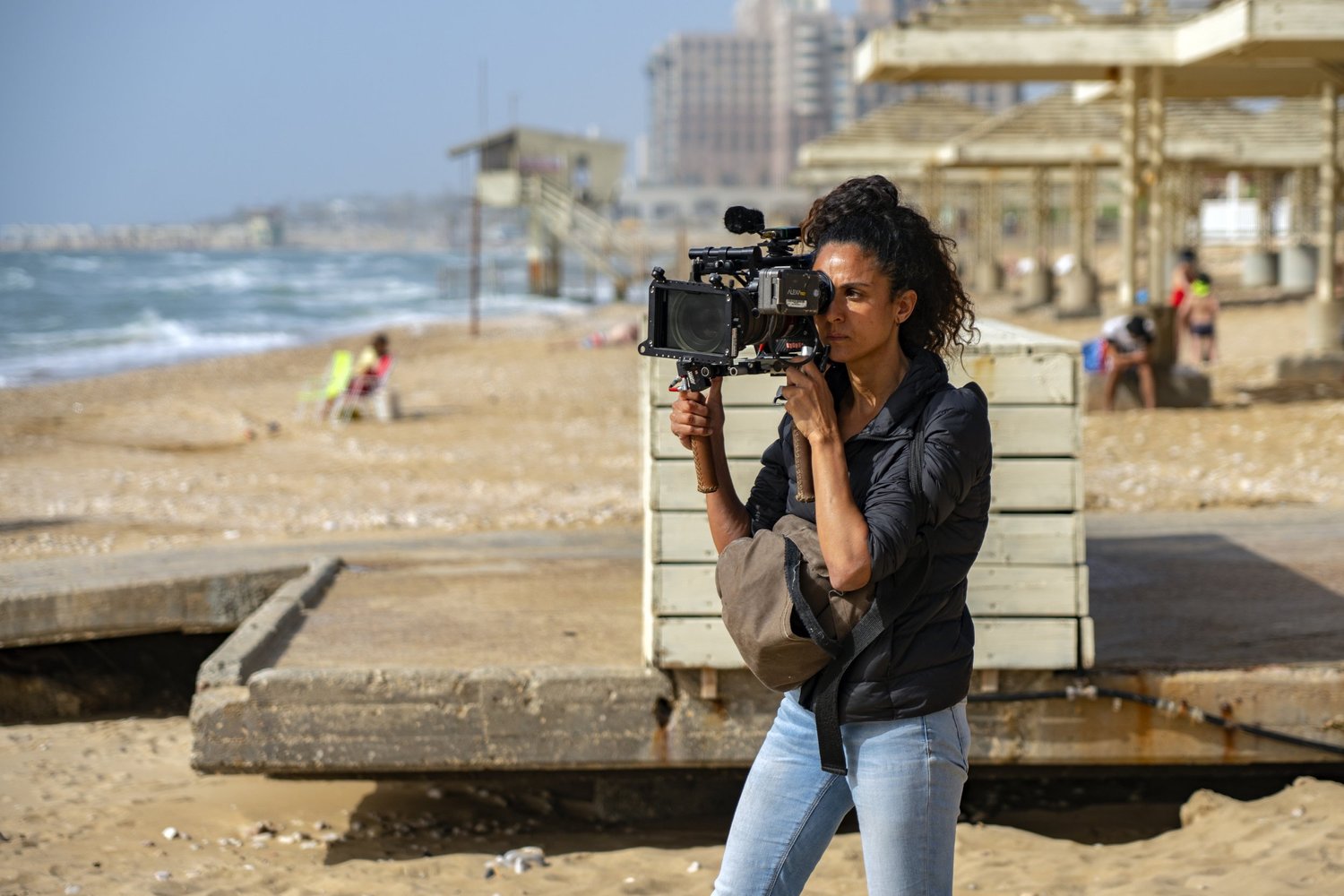
Next question goes to Eimi. You chose to tell this story in Sahrawi and Spanish rather than Arabic or French, which might have garnered broader commercial appeal. What does language represent in terms of cultural identity for displaced peoples, and how did working in Sahrawi affect the authenticity of performances?
Eimi Imanishi: Language is one of the most important forms of identity a people or culture has. My aim with the film was to transport people to Western Sahara, to its people – it would be lying to convey the world in a different language. And I believe the film’s authenticity comes from the Sahrawi actors who are playing characters they believe in because so much of themselves and their lives are expressed through them.
Let’s wrap up with you, Nadhira. How do you see Mariam’s struggle fitting into a broader spectrum of women’s resistance, and did you draw inspiration from real Sahrawi women’s experiences?
Mohamed: I’ve been inspired by women—not only Sahrawi women, but women from all over the world. The experiences of the women who have surrounded me over the years have inspired me even more and pushed me to try to do my best.
Nomad Shadow had its world premiere at the 2025 Toronto International Film Festival in the Centrepiece section.
Jerry Chiemeke is a Nigerian-born writer, film critic, journalist, and lawyer based in the United Kingdom. His writing has appeared in Die Welt, The I Paper, The Africa Report, The British Blacklist, Berlinale Press, The Johannesburg Review of Books, Culture Custodian, Olongo Africa, and elsewhere. Chiemeke’s work has won or been nominated for the Pushcart Prize, Ken Saro Wiwa Prize, Diana Woods Memorial Award for Creative Nonfiction, Best Small Fictions, and the Quramo Writers Prize. He is the author of the critically-acclaimed short story collection, Dreaming of Ways to Understand You.


